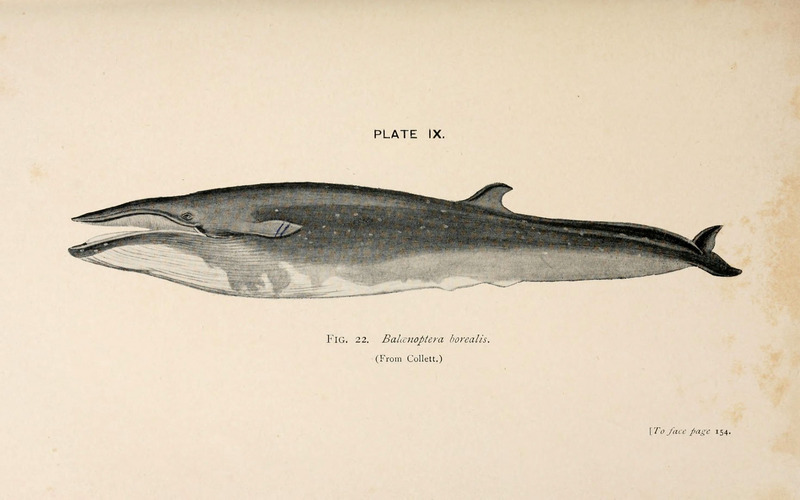sei whale (Balaenoptera borealis) Description
PLATE IX.
Fig. 22. Balaenoptera borealis. (From Collett.)
Date 1900
Source http://www.flickr.com/photos/biodivlibrary/6002555446
Author Beddard, Frank E.
Full title A book of whales, by F.E. Beddard ... With forty illustrations by W. Sidney Berridge.
Source: https://commons.wikimedia.org/wiki/File:A_book_of_whales_(Plate_IX)_(6002555446).jpg
The sei whale, Balaenoptera borealis, is a baleen whale, the third-largest rorqual after the blue whale and the fin whale. It inhabits most oceans and adjoining seas, and prefers deep offshore waters. It avoids polar and tropical waters and semienclosed bodies of water. The sei whale migrates annually from cool and subpolar waters in summer to winter in temperate and subtropical waters. Reaching 19.5 m long and weighing as much as 28 tones, the sei whale consumes an average of 900 kg of food every day; its diet consists primarily of copepods, krill, and other zooplankton. It is among the fastest of all cetaceans, and can reach speeds of up to 50 km/h over short distances. The whale's name comes from the Norwegian word for pollock, a fish that appears off the coast of Norway at the same time of the year as the sei whale. Order: Artiodactyla, Infraorder: Cetacea, Family: Balaenopteridae, Genus: Balaenoptera, Species: Balaenoptera borealis Lesson, 1828.
Synonyms:
Balaena rostrata Rudolphi, 1822
Balaenoptera laticeps Gray, 1846
Sibbaldius laticeps Flower, 1864
Physalus laticeps Flower, 1864
Rudolphius laticeps Gray, 1868
